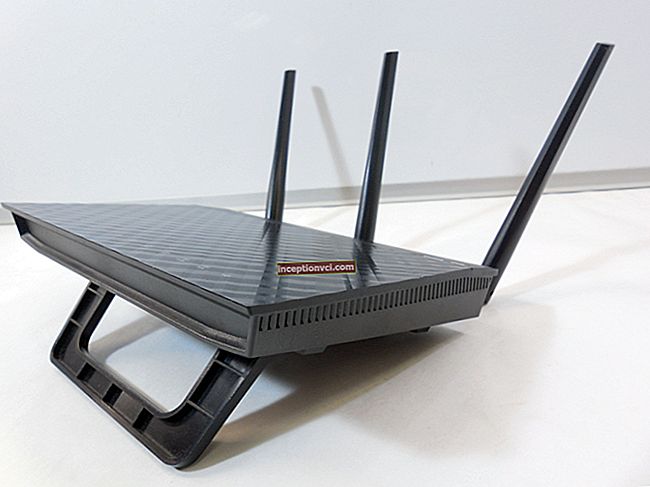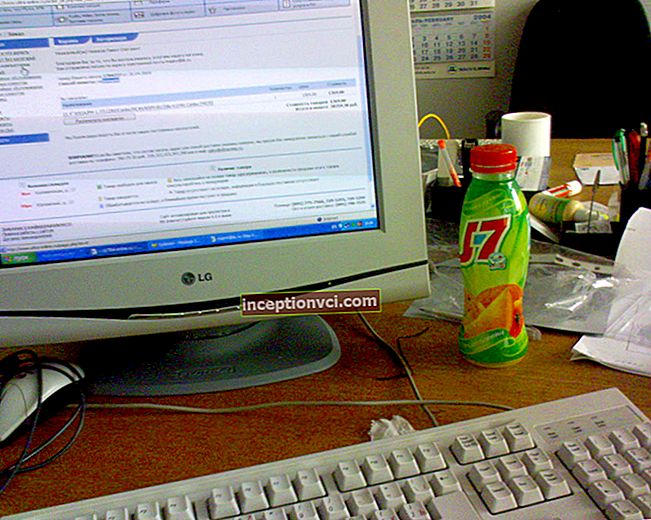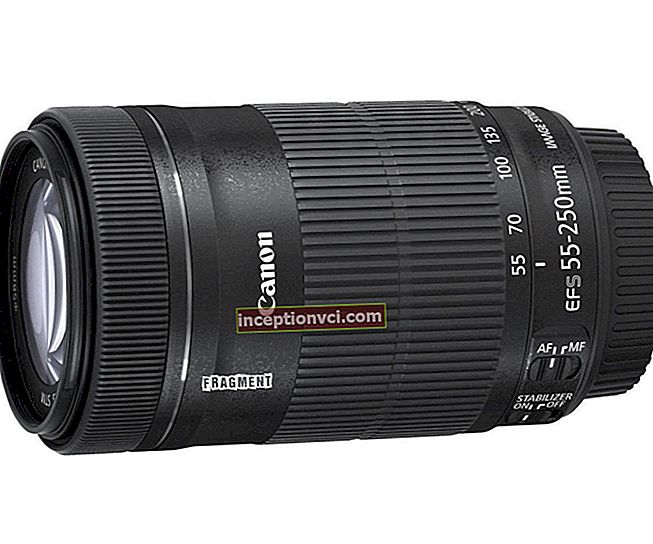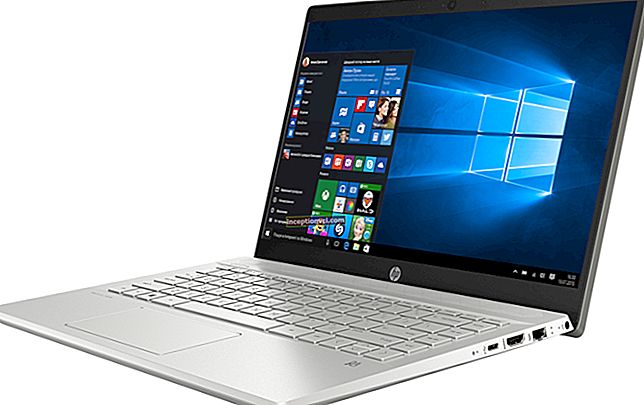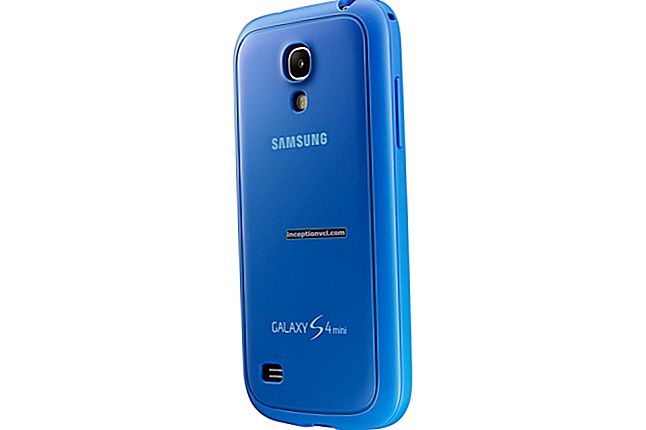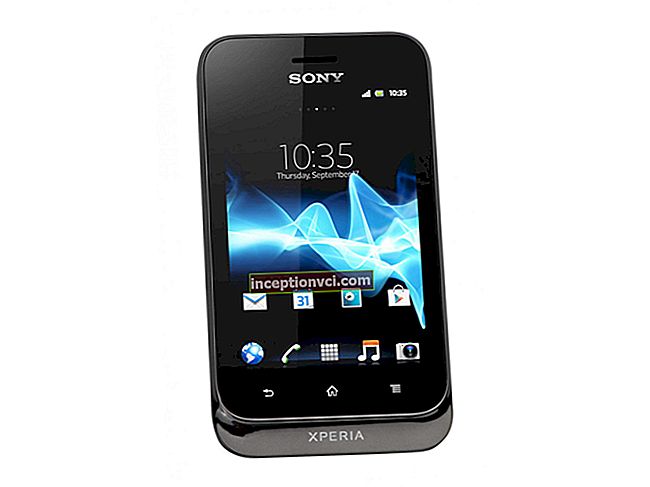The history of the discovery of liquid crystals
You will most likely be surprised to learn that liquid crystals have been discovered during plant research. They were conducted by the Austrian botanist Friedrich Reinitzer in 1888. Scientists have discovered a substance with a crystalline structure, which, when heated, behaved anomalously, destroying the existing stereotypes of the theory of three states of matter: solid, liquid and gaseous. The fact is that the Austrian had two melting points and, accordingly, two different liquid states - turbid and transparent. When the temperature reached 145.5 ° C, this substance became significantly cloudy and became almost fluid, but only up to 178.5 ° C the crystal structure did not undergo any changes, but after exceeding this indicator it nevertheless turned into a liquid. Reinitzer shared his incredible discovery with his colleague, the German physicist Otto Lehmann. The scientist continued his research and discovered another very curious property of the substance. It turned out that this "pseudo-liquid" had the properties of a crystal, manifesting itself in a similar way in electromagnetic and optical experiments. And although Reinitzer is rightfully considered the discoverer and a kind of father, but the name "liquid crystal", which later stuck, was given by Lehmann.
Referring to the technical dictionary, we find the following definition of the term "liquid crystal". LC ("liquid crystal") is a phase in which a substance is located between a very solid and practically isotropic (liquid) state (mesophase). In other words, in this phase, the substance acquires significant fluidity, while maintaining the stability and crystal structure of the arrangement of molecules in a wide temperature range.
For almost a century, this discovery was ignored, being only a unique natural phenomenon. However, everything changed in 1963, when the American J. Ferguson was able to apply the unusual properties of liquid crystals. We are talking about the ability of a substance to change color under the influence of temperature - to detect thermal fields invisible to the naked eye. After the patent for the invention was obtained, interest in liquid crystals skyrocketed.
Already in the 70s of the last century, the famous company Radio Corporation of America introduced the first of its kind monochrome LCD screen, after which the innovative technology began to attract more and more interest from consumer electronics manufacturers, especially wristwatches and elegant calculators. But the appearance of color screens has not yet been discussed.
The principle of operation of liquid crystal screens
The essence of the work of liquid crystal matrices lies in such a property of the luminous flux as polarization, that is, the inequality of different directions of propagation of a light wave in a plane. Simply put, the light is as if scattered in space. Light familiar to all of us is unpolarized, since the amplitudes of all its waves lie in planes. But there are also substances (polarizers) that are able to direct the light passing through them in only one plane.
If we consider the principle of operation of the LCD matrix, then in general terms it looks like this. By placing 2 polarizers so that their polarization planes are at right angles (90 °) to each other, we will ensure that light waves cannot pass through these substances. However, if we place something between them that can rotate the polarization vector of light at the required angle, then we will be able to control its brightness, extinguish and ignite the light as we wish.We will consider in more detail the implementation of this principle in various types of matrices below.
In a somewhat simplified version, the LCD matrix has the following structure:
* lamp (halogen) backlight;
* for uniform illumination - a set of reflectors and polymer light guides;
* polarizing filter;
* plate-substrate (glass), with contacts applied to it;
* liquid crystals;
* second polarizer;
* one more substrate with contacts.

LCD matrix structure
Since each pixel in color matrices consists of red, green and blue colored points, it became functionally necessary to add an additional color filter. Each unit of time, one of the three matrix cells that form a pixel is either on or off. By combining these positions, we are able to get different shades of color, and by turning on all three elements at the same time, we will see white.
In general, all matrices are divided into passive (simple) and active. The main difference between them is that the process of activity control in passive matrices occurs "pixel by pixel", i.e. in order from cell to cell in a row. The main problem in the production of liquid crystal screens using this technological process is that, simultaneously with an increase in the diagonal of the display, the distances along which current is transmitted through the conductors to each pixel increase. As a result, during the time until the electric charge reaches the last pixel, the first will have time to lose its charge and go out. And secondly, with an increase in the length of the conductors, the level of the required voltage also increases, which leads to an increase in noise and interference. This drastically reduces image quality and color accuracy. In this regard, passive matrices are mainly used for displays with a small diagonal that do not require a high display density.
The result of the research was the invention of a new technology, which is now widely known under the abbreviation TFT (Thin Film Transistor), which means thin film transistor. This technology has dramatically reduced the response time of the matrix, making available large screen diagonals. The essence of the constructive difference between active matrices is that the transistors are connected to each cell of the matrix separately, and, being isolated from each other, they can create a field upon receiving the corresponding signal from the center of the logic - the matrix driver. In order for the cell to be able to hold the received charge for some time, a small capacitor is added to it, which serves as a kind of storage capacity.
Types of matrices
Back in 1973, the first, with the most primitive production technology, a matrix called TN (Twisted Nematic) was introduced. The main feature of nematic crystals is that they line up one after the other and form a spiral in the matrix. The first crystal in a spiral is always located in the same plane. This is achieved by applying special recesses to glass substrates, thanks to which the crystals take the desired position. The last crystal is installed in a similar substrate with a recess, which (substrate) is located at an angle of 90 ° to the first. All other crystals located between these two line up one after the other, connecting in a spiral. Electrodes are connected from all ends of the spiral, which create an electric field to influence the arrangement of the crystals. In the absence of the latter, the liquid crystals rotate relative to each other by 90 ° in the horizontal plane between the two plates. In this case, the first polarizer is in the same plane with the second polarizer, thus directing the polarization axis into one common plane for the two polarizers. Thus, all three are fully illuminated and a white pixel is formed on the screen. Apply voltage to the electrodes, the spiral begins to shrink.Having reached the highest voltage value, the crystals are positioned in such a way that they do not rotate the polarized light, and it is absorbed by the second polarizer. This forms a black point. By varying the voltage, we change the position of the crystals so that only a part of the polarized light passes through the filters, thus obtaining gradations (shades of gray).

However, due to the peculiarities of TN technology, a clear formation of shades is very problematic, and until now the correct color rendition and contrast is a completely unresolved problem of this type of LCD matrix.
Another disadvantage of the first TN-matrices was the minimum viewing angles at which the color rendition was not distorted. The solution to this problem was an additional layer (film) in the form of a special film, which was superimposed on top of the matrix, thus expanding the viewing angle. Today's TN matrices provide a natural image with a viewing angle of approximately 100-120 ° horizontally. The situation is much worse with vertical viewing angles.

A specific feature of TN is also the fact that the position of the pixel when the voltage is disconnected is white. In this case, as soon as the point transistor burns out (the so-called pixel burnout), a brightly glowing dot appears on the screen. And given the fact that it is extremely difficult to achieve absolutely accurate placement of liquid crystals, it is almost impossible to achieve a clear display of black color in TN matrices.
To reduce the reaction rate of passive matrices, STN (Super Twisted Nematic) technology was created. It lies in the fact that the angle between the normal of the front of a special light wave and the angle of the director of liquid crystal molecules (this is the scientific name of the previously mentioned grooves) on glass substrates is more than 200 ° (recall that in a conventional TN matrix this angle is 90 °). The result of such manipulations was a sharp increase in the speed of transition between extreme states. But there is also a downside to the coin. Having achieved such a positive effect, the developers had to sacrifice stability, and now in the new matrices with STN technology it becomes extremely difficult to control the crystals in the middle positions. Experiments showed that the crystals were more or less stable at angles between grooves in the region of 210 °. However, here, too, there were some excesses. Sharp engineers attempted to eliminate this problem and developed a technology called DSTN - Dual-Scan Twisted Nematic. This technology is based on dividing the display into two separate parts, each of which is controlled separately. In addition to the increased signal transmission rate observed with the use of DSTN, the advantage of this technology in smoothing out color distortions was also highlighted. However, its significant disadvantage was its high weight and high cost.
Summing up the intermediate result, let's highlight the pros and cons of TN + film matrices (taking into account all modifications) for today:
Advantages:
* high speed of switching cells;
* low cost and price;
* the smallest response time among modern matrices;
Disadvantages :
* rather low quality of color rendition;
* critically small viewing angles;
* very low contrast.
Due to the low cost of technology, most of the LCD monitors produced today with the most popular 17-inch diagonal are made on the basis of TN + film. But by and large, for a user who is undemanding to the image quality, there is nothing to worry about, since the displays produced on the basis of this technology are quite suitable for everyday work.

It was based on the discovery of Gunther Baur, made by him in 1971. Initially, the developed technology was called Super-TFT, but later, during commercialization, it was called IPS (In-Plane Switching). A distinctive feature of the new technology from TN was the arrangement of crystals: now they were not twisted into a spiral, but were placed parallel to each other along the plane of the screen.Both electrodes are located on the lower glass substrate. Thus, in the absence of voltage on the electrodes, the light does not pass through the second polarization filter, the polarization plane of which is perpendicular to the first, and as a result, IPS provides significantly better contrast and natural black color (and not dark gray as in TN). Moreover, the viewing angles have also increased and are now 170 ° both horizontally and vertically.
However, not everything is so “sweet” with IPS. The newly minted technology is also not without its drawbacks due to its advantages.
First, it takes a long time to rotate the entire array of parallel crystals. This means that the response time for screens with IPS technology, as well as its evolutionary continuation S-IPS (Super-IPS) and DD-IPS (DualDomain-IPS), is higher than that of TN + film and averages 35-25 ms.
Secondly, monitors based on IPS-matrices have increased power consumption. This is due to the arrangement of the electrodes, which now fit on one substrate and required a correspondingly higher voltage.
Thirdly, in order to sufficiently "illuminate" this panel and at the same time ensure sufficient brightness of the pixel image, very powerful lamps are required.
Perhaps most importantly, these panels are much more expensive, and not so long ago they could only be found in monitors with large diagonals.
As a result, monitors based on matrices with IPS technology are an ideal choice for designers and other specialists in areas where color reproduction quality is important and cell switching speed is not so significant.

By the beginning of the 90s of the last century, it was finally clear that it was at least not rational to deal with the shortcomings of TN + film, and to increase the speed of S-IPS was completely unrealistic. Therefore, Fujitsu in 1996 set about developing a new technology called VA (Vertical Alignment). But this technology could not be used for commercial purposes, and as a result of its refinement, MVA (Multi-Domain Vertical Alignment) was born.
In the new matrices, as in IPS, the crystals are located parallel to each other and are at a special angle of 90 ° to the second filter, as a result of which the light flux does not pass through the second and is completely absorbed by it. As a result, we get a black point on the screen. By turning the crystals by applying voltage, we get a luminous (white) pixel.
MVA was developed to combat the shortcomings of the first VA-matrices, the essence of which was the sharp change in the color of the cell when changing the horizontal viewing angle. For a clearer understanding of this phenomenon, imagine that the crystals are rotated 45 ° and show a light red color. Moving to the side, we increase the viewing angle and see an already more saturated red color. Moving to the other side, we will see how the color goes to the opposite part of the spectrum and becomes green. The solution to the problem with the help of MVA lay in the significant complication of polarizing filters. In addition, peculiar triangles began to be applied to the glass substrate, in contrast to the typical flat electrodes used until that time in other types of matrices.
With the current turned off, everything is simple - the crystals line up perpendicular to the substrate and are darkened by the second polarizing filter so that black color will be visible from all sides. When the current is on, the crystals are rotated by the required angle by changing the applied voltage and shifted the polarization vector of the light. But the whole difficulty is that this angle is between the plane of the electrode and the crystal. And in order to see the non-distorted color, we are forced to look at an angle so that we can see only one zone in which the crystals are located in the correct position. In this case, the second zone will not be visible.

As you understand, such a solution greatly complicates the design of both the polarizer filters and the panels themselves, since now each point on the screen must be duplicated for two zones.
MVA is also not perfect and has its drawbacks. For example, the new technology has never been able to achieve TN in terms of response time. At the same time, this characteristic in MVA is no longer as critical as in IPS matrices, and is about 8 ms. Contrast and brightness are also significantly better than S-IPS, reaching 1000: 1 ratio. Color rendering of MVA matrices is a cross between extremely unsatisfactory TN indicators and super high quality in S-IPS matrices (optimal for serious work with printing and design).

The MVA technology has been continued in the form of a technology called PVA, developed by Samsung, which was not stingy by agreeing to pay royalties to Fujitsu. But no fundamental changes have occurred. The only significant difference was the increased contrast, which, in fact, is also a positive result for consumers.

Comparison of the main types of LCD matrices
LCD monitor parameters
When choosing a monitor, many users mistakenly believe that cell response time is one of the most important metrics, and therefore TN + film dominates sales reports. However, this is far from the case, and most buyers are greatly mistaken in taking into account only one characteristic. When choosing a specific monitor model, we recommend a comprehensive approach comparing all the characteristics of the monitor.
Response time (reaction)
Reaction time (measured in milliseconds (ms)) - determines the rate of change of the states of the screen cells, i.e. the time during which the cell of the liquid crystal panel changes color, which affects the rendering of dynamic images (movies, games). This indicator is measured in two ways: as the time of transitions from black to white and back (black to black or tr + tf) and between grayscale (gray to gray or G-2-G). The values of the same monitor for these two methods will differ greatly (by 2-3 times). Let's consider these techniques in more detail.
The second technique measures the rate of change of shades of gray, for which a much lower voltage is applied to the cell to position the crystal in the desired position to obtain the desired grayscale. As a result, much more time is spent. Response times for the second technique vary within 16 ms - up to 27-28 ms.
Not so long ago, the first models of monitors appeared in which this problem found a completely logical solution. The essence of the idea is to supply an alternating voltage. The maximum voltage (or none at all) is applied to the cell, and at the right moment the voltage necessary to place the crystal in a certain position is instantly supplied. The complexity of this process lies in the very precise calculation of the required voltage with a frequency exceeding the sweep frequency, as well as the time of its supply.
Depending on the results of the indicator, the response time today all monitors are conditionally divided into 4 groups: Less than 4 ms - very fast monitors; 5-8 ms - fast monitors; 12-18 ms - medium, universal models; 20 ms or more - monitors not intended for dynamic graphics.
Contrast
This indicator characterizes the maximum ratio of the brightness of white to black colors of the matrix with the same backlight intensity. In other words, the more the white is exposed and the less bright the black, the higher the contrast. The higher the contrast, the brighter the colors, and the image looks sharper and richer. This indicator is measured in the ratio of white to black and in the characteristics of monitors is as follows, for example: 800: 1, i.e. brightness of white matrix - 800 cd / m², black - 1 cd / m². Contrast ratios of 3000: 1 are already available.
However, the values stated in the characteristics of the monitor should be believed with a small correction, since this value is calculated directly for the matrix, not for the monitor. Measurements are made at a special stand, where the matrix backlight is powered by a strictly standard voltage.
Brightness
Luminance is measured in cd / m² (cd / m²). It determines the brilliance of the transmitted image, the saturation of the picture in games and watching videos. The higher the power of the backlight, the higher the brightness. Today, most monitors use LED backlighting, which is able to provide better uniformity of the glow, and also consuming a minimum of electricity allows you to actively use algorithms for increasing dynamic contrast.
Viewing angles
Measured in degrees. The maximum values that can be found today are 178 ° / 178 °. It should be borne in mind that the angles are determined in the center of the matrix, and we initially look at the corners at an angle. For comfortable work, the contrast of the image should not fall below 10: 1. In this case, color rendition plays the last role in this position, even if the colors are distorted.
Color rendering
Before the 25ms limit was exceeded when switching cells using the black-white-black technique, all TN matrices displayed an honest 24-bit color. However, in the race of speeds, color rendering fell victim to AU Optronics, which decided to drop honest 24-bit color. All TN + film matrices, starting with a speed of 16 ms, provide only 262 thousand shades (18 bits).
To increase the number of possible shades, 2 methods were invented: dithering (mixing dots with different colors), or changing the cell colors every time the picture is refreshed (Frame Rate Control, FRC). The latter method is more progressive, since the frame rate does not allow the human eye to catch the color change at each frame. But we must make a reservation that this applies only to TN + film. Other matrix types support full 24-bit color reproduction
Perspectives
Despite all the advances in the field of liquid crystal matrices, their further improvement has not stopped. Developers of new technologies have to solve more and more new problems. So, when the diagonal of the displays increases, problems arise with the placement of a huge number of transistors on the glass panel. Having made some tricky calculations, we find out that for a standard resolution of a 15-inch monitor (1024x768 pixels) it is required to place 786,432 pixels on the screen. Considering that each point is formed by 3 pixels of different colors, we get a number of about 2.35 million. This is the number of transistors that need to be placed on a monitor of this resolution and diagonal.
Getting this density on glass is not an easy task. Therefore, designers have to find new materials and methods for manufacturing transistors. One of these solutions was the use of crystalline silicon to create transistors, which until recently were produced on amorphous silicon and were limited in useful area, and also required rather high voltage values.
The difficulty in using crystalline silicon is that high temperatures (about 900 ° C) are required for its deposition, which exceed the glass melting point. To solve this problem, several technologies have been developed that allow the deposition of silicon molecules at a relatively low temperature. The most widely used method is laser annealing. This method is based on melting amorphous silicon deposited on a glass substrate with an excimer laser.
The electron mobility in crystalline silicon is 400 (!) Times greater than in amorphous silicon, which makes it possible to reduce the size of the transistor itself. Moreover, the crystal structure of silicon allows the panel driver logic to be placed directly in the crystal itself.As a result, we get System on Panel panels, with a reduced number of contacts from 4000 to 200 and significantly less weight than traditional ones, which are much easier to integrate into a monitor. All of the above advantages significantly reduce the electricity consumption of the panel.
Our store contains a huge number of products that use liquid crystals !!!
